SRI LANKA
Colombo

Colombo
Colombo
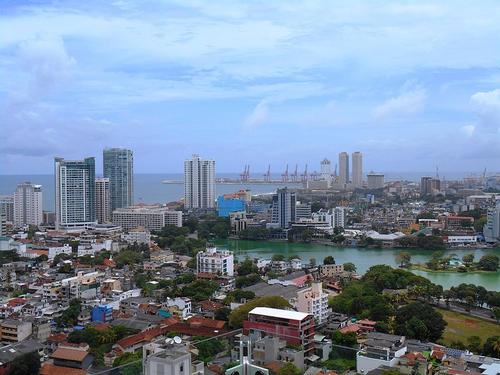 ColomboPhoto: Anuradha Dullewe Wijeyeratne in the public domain
ColomboPhoto: Anuradha Dullewe Wijeyeratne in the public domain
Colombo is the largest city and the capital of Sri Lanka. Colombo is located on the western coast of the island. Colombo is a busy and lively city and also the capital of the district with the same name. According to the 2001 census, the city has a population of 647,100. Metropolitan Colombo with the districts of Colombo, Gampaha and Kalutara has an estimated population of 5,648,000 in an area of 3,694.20 km². Colombo used to be the political capital of Sri Lanka before Sri Jayawardenapura Kotte became it in 1978.
From its inception, Colombo had a strategic position due to its large port and later in history due to its location on major sea routes. The city is home to many of Sri Lanka's offices. There are also many restaurants. Colombo is a multi-ethnic and multi-cultural city. Colombo's population consists of a large number of ethnic groups, particularly Sinhalese, Moors and Tamils. There are also small communities of Chinese, Portuguese, Dutch, Malay and Indian origin.
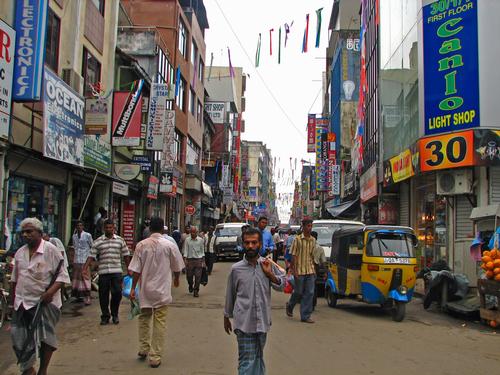 Colombo street scenePhoto: McKay Savage CC 2.0 Unported no changes made
Colombo street scenePhoto: McKay Savage CC 2.0 Unported no changes made
Location
The coordinates of Colombo are: 6°56'04' North Latitude and 79° 50'34' East Longitude. Colombo is situated on both land and water and is intersected by numerous canals. Beira Lake covers 160 hectares in the heart of the city and is a distinctive feature of Colombo. For centuries, the lake has been used for the defence of the city. The Kelani River forms the northern and north-eastern boundary of Colombo city. The river flows into the sea through a part of the city known as the Modera, which means river delta.
Weather
Colombo has a tropical rain climate. From March to April, the average temperature is about 31° C. Major changes occur during the monsoon seasons from May to August and October to January. This is the time of year with heavy rainfall. The average low temperature can still reach 25.6° C. The average rainfall is 2,400 mm. per year.
History
Colombo's natural harbour was known to Roman, Arab and Chinese traders for over 2,000 years. Arab Muslims settled here in the 8th century AD because of the trade. Especially since the port enabled them to control trade between the Sinhalese kingdoms and the outside world.
The name Colombo was first introduced by the Portuguese in 1505 The name probably comes from the classical Sinhalese name Kolon thota, The meaning is probably "gateway to the River Kelani".
Portuguese explorers reached an agreement with the local King on their first visit; they were allowed to trade in cinnamon. The Portuguese were given control of the coastline on condition that they would defend it against invaders. They were also allowed to set up a trading post in Colombo. After some time, they expelled the Muslim inhabitants of Colombo and started to build a fort in 1517.
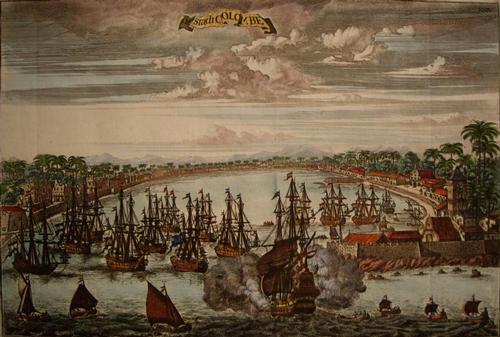 Etching of Colombo around 1680Photo: Public Domain
Etching of Colombo around 1680Photo: Public Domain
In 1638, the Dutch signed a treaty with King Rajasinha II of Kandy to help the king in his struggle against the Portuguese in exchange for the monopoly on trade. The Dutch took possession of Colombo in 1656 after a long siege, only 93 surviving Portuguese were allowed to leave the fort. The Dutch gained control of the richest cinnamon plantations on the island, including Colombo. Colombo served as the capital of the Dutch maritime provinces under the control of the Dutch East India Company until 1796.
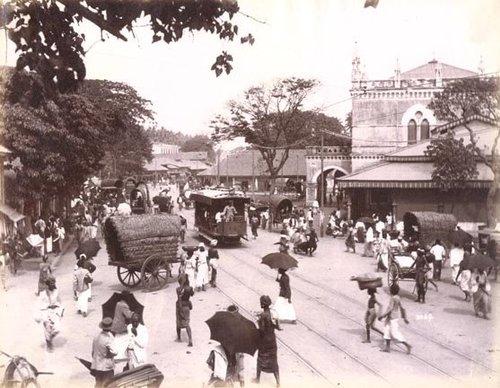 Colombo street scene around 1900Photo: Public Domain
Colombo street scene around 1900Photo: Public Domain
The British captured Colombo in 1796, it remained for a long period only a British military outpost until the Kandy kingdom was conquered in 1815. The British made Colombo the capital of their new crown colony of Ceylon. Unlike the Portuguese and the Dutch before them, who used Colombo primarily as a military fort, the British began building houses and other civilian structures around the fort. This promoted the development of the city of Colombo. By 1865, the population was around 80,000. The British deserve credit for planning the current city. The era of colonialism ended in 1948 when Ceylon became independent from Britain. Colombo became the capital of Sri Lanka (the new name of the island). In 1978 the administrative functions of the capital were moved to Sri Jayawardenepura Kotte, Although Colombo lost its status as the capital of Sri Lanka, Colombo remained the commercial centre of Sri Lanka.
Today, the influence of the Portuguese, Dutch and British is clearly visible in Colombo's architecture, naming, clothing, food, language and culture. Buildings from the three eras bear witness to Colombo's turbulent and glorious past. The city and its people show an interesting mix of European lifestyles and local customs.
Sights
Colombo is the most attractive city in Sri Lanka. Tourists visit it because of its beautiful landscape and interesting sights.
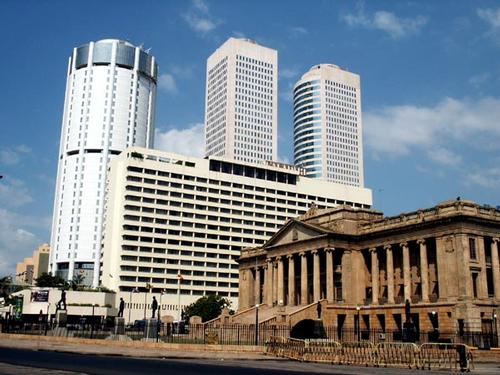 World Trade Center ColomboPhoto: Mystìc CC 3.0 no changes made
World Trade Center ColomboPhoto: Mystìc CC 3.0 no changes made
The two towers of the World Trade Center are considered the most recognisable landmarks of the city. Before these towers were built in 1997, the adjacent Bank of Ceylon Tower was the tallest structure and the most prominent point of the city. The 40-storey Twin Tower complex is the centre of major commercial establishments, located in the Fort district, the commercial core of the city. The vast majority of Sri Lanka's companies are headquartered in Colombo.
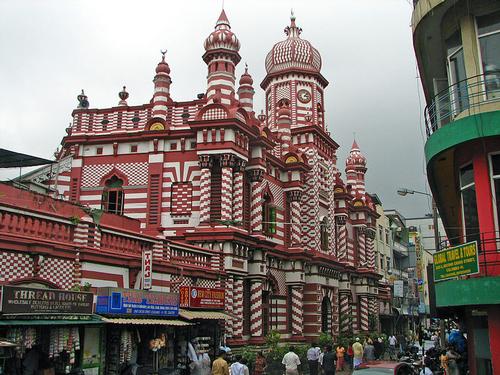 Jami-Ul-Alfar Mosque in ColomboPhoto: McKay Savage CC 2.0 Generic no changes made
Jami-Ul-Alfar Mosque in ColomboPhoto: McKay Savage CC 2.0 Generic no changes made
In the era before the skyscrapers, the old parliament building and the lighthouse stood out the most. The mosque became the symbol of Colombo and was recognised by sailors approaching the harbour. The mosque is still one of the most visited tourist attractions in Colombo.
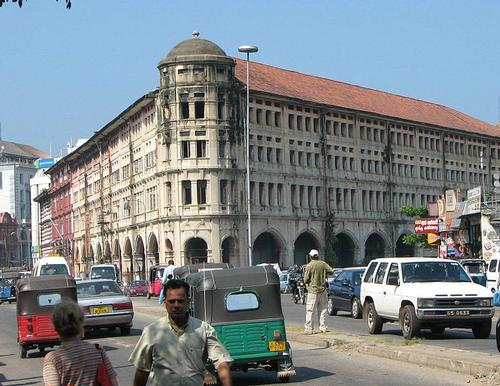 Fort District ColomboPhoto: Bernard Gagnon CC 3.0 Unported no changes made
Fort District ColomboPhoto: Bernard Gagnon CC 3.0 Unported no changes made
Another landmark is St. Paul's Church Milagiriya, one of the oldest churches in Sri Lanka, first built by the Portuguese and rebuilt by the British in 1848. The buildings in Fort district, such as the famous Cargills & Millers complex are protected by a special order aimed at preserving the historic beauty of the Fort Area.
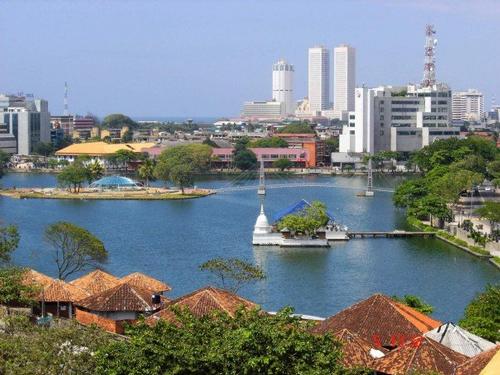 Beira Lake ColomboPhoto: Mayakaru at English Wikipedia CC 3.0 no changes made
Beira Lake ColomboPhoto: Mayakaru at English Wikipedia CC 3.0 no changes made
Beira Lake is a popular tourist attraction, with regular regattas and theatrical events taking place on its shores.
Tips
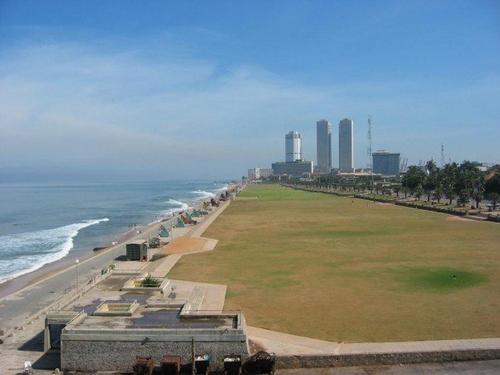 Galle Face Green, boulevard of ColomboPhoto: Mayakaru at English Wikipedia CC 3.0 no changes made
Galle Face Green, boulevard of ColomboPhoto: Mayakaru at English Wikipedia CC 3.0 no changes made
Galle Face Green is the largest and most elegant promenade in the city. The promenade is lined with palm trees and stretches along the coast. This promenade is a mile long and is located in the heart of the city there is always a lot of activity. The Green is particularly busy on Fridays and Saturdays. There are numerous small stalls and a small stretch of beach where you can take a refreshing dip. The Green is also a place where international and local concerts and performances are held, such as the recently established World Drum Festival. Around Galle Face Green are numerous sophisticated coffee bars, restaurants, shops and boutiques.
Useful links Colombo
BBC Country ProfilesWorld Fact Book Explore all Countries
How to call
Last updated December 2025
Copyright: Team - The World of Info